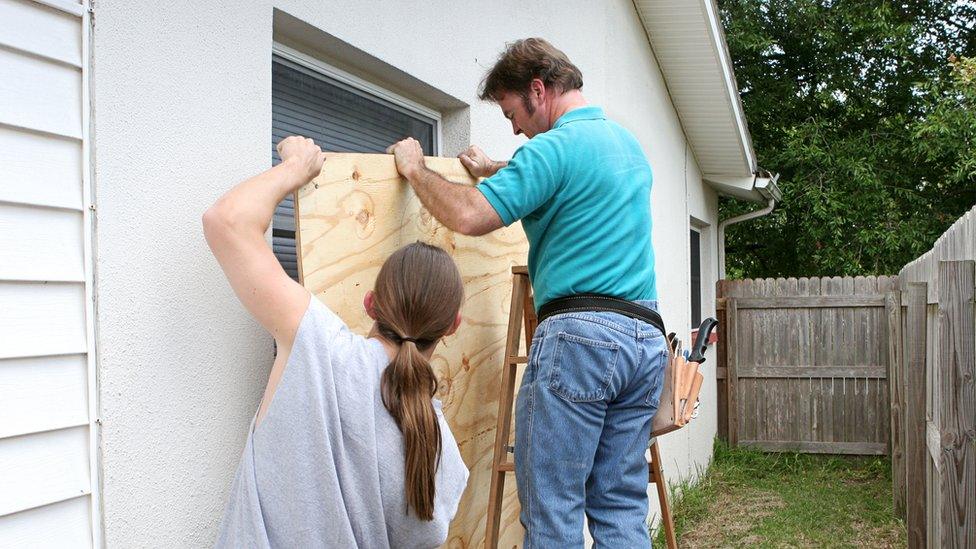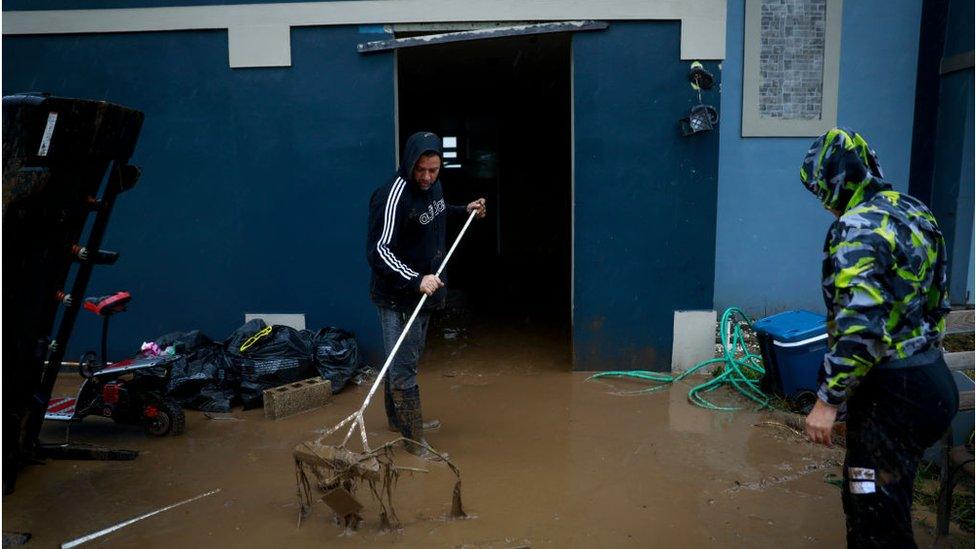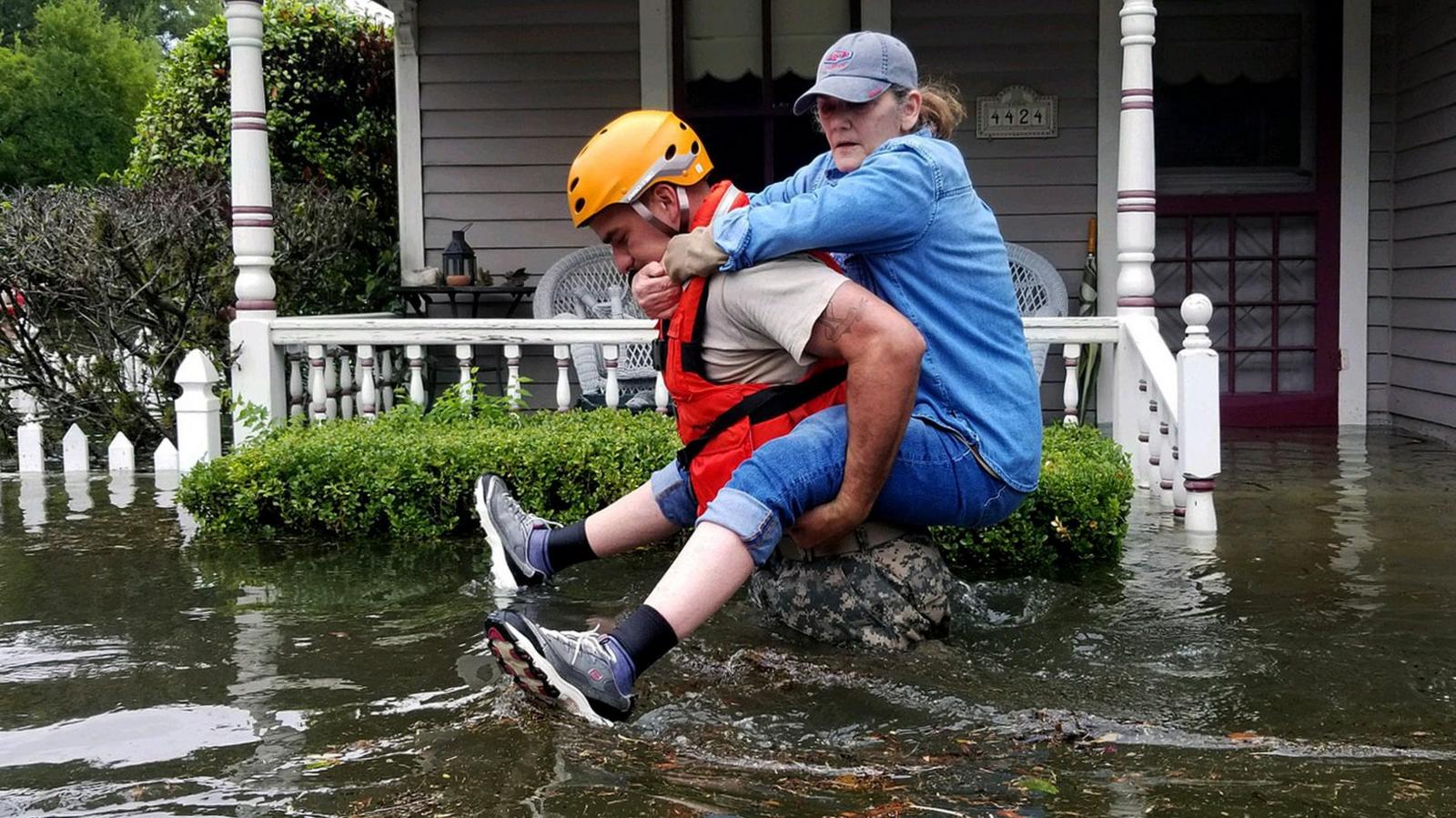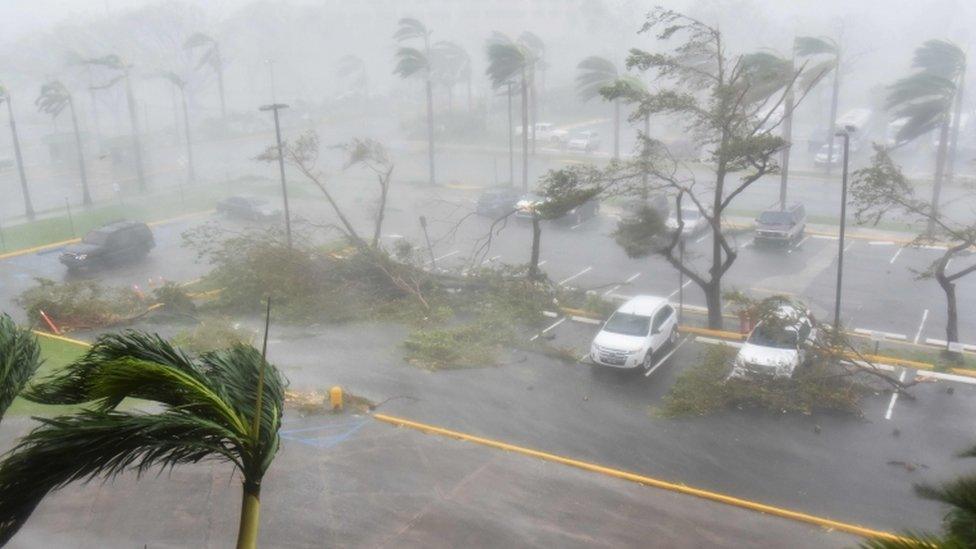Hurricane Idalia: What to do before, during and after
- Published

Hurricane Idalia is expected to make landfall in Florida this week.
Heavy rainfall and winds threaten to trigger life-threatening flooding and storm surges to the region.
So how should people prepare?

If you have been ordered to evacuate, bring three days worth of water to your shelter with you, plus cash and any specific food or medicines you need.
If you are driving to the shelter, pack jump cables, flares, paper maps, and copies of your identity papers and insurance documents.
If you are staying at home, experts say you should do the following:
Before the hurricane
Make sure you have a working torch (flashlight) and spare batteries
Check that your first aid kit is fully stocked
Charge all mobile phones and portable chargers
Stock up on food, bottled water and any medications you take regularly
Be sure to include canned foods that can be eaten without needing extra water. You will of course need a working can opener for this, unless you can open a tin with your bare hands like the men in this video, external
Bring things inside that could be picked up by the wind, such as garden furniture, children's toys, and bicycles
Fill a bathtub or a large container with water so you can keep flushing the toilet if the water gets cut off
Close all your windows and board them up with storm shutters or plywood to protect them from breaking
Unplug small appliances so they are not damaged if there is a power surge
If you have time, bring furniture to the higher floors of your house so they are out of the way of flooding

During the hurricane
When it comes to eating, start with things that will go off soon - check the fridge and freezer - in case the electricity gets cut off
Stay in the room with the fewest number of doors and windows, preferably just one internal door. It might be a bathroom, hallway or under the stairs
The safest place has traditionally been thought to be the basement but avoid this as there is a risk of flooding
Keep in touch with the latest news on the hurricane through local radio, TV reports and social media so you know when the authorities declare that it is safe to leave
During a power cut, do not use candles in case the wind knocks them over and starts a fire
After the hurricane:
Stay indoors until the authorities say it is safe to leave - avoid mistaking the eye of the storm for the end of the storm
Do not touch downed power lines as they may electrocute you
Stay away from floodwaters
Do not drink tap water until you are informed it is not contaminated
The Red Cross's Hurricane app has a storm tracker and preparation tips as well as a quick way of letting family and friends know you are safe.
Related topics
- Published14 September 2017

- Published20 September 2017
